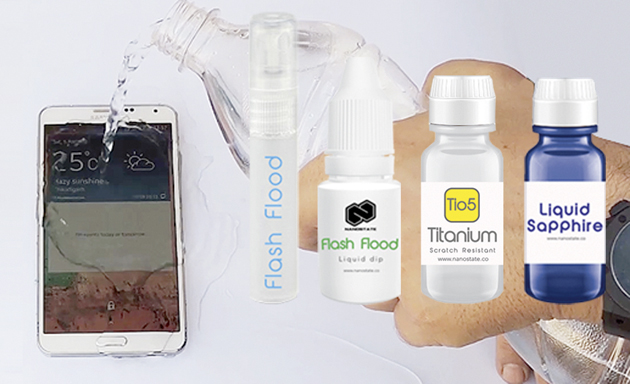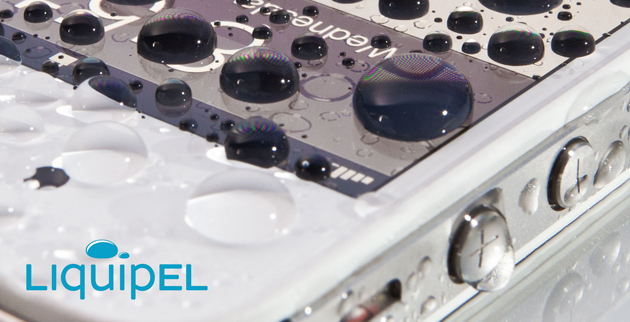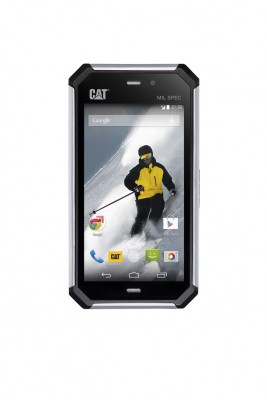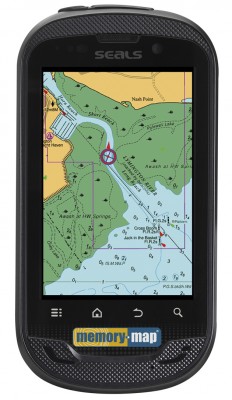New waterproof coatings based on nanotechnology are claimed to be able to protect your mobile devices from water damage. Do they work? Toby Hodges aims to find out
Like it or not, the use of mobile devices in cockpits is commonplace today, yet our prized smartphones and tablets are very vulnerable to water damage. It’s reportedly the number one cause of mobile phone casualties.
Many of us will have said a silent prayer at some stage, hoping that a disassembled phone drying on a radiator will somehow resuscitate itself. A fellow crewmember once killed three consecutive phones by dropping them into the heads.
So what is the best way of protecting mobile devices from the elements? How do you waterproof your mobile? A number of waterproof hydrophobic coatings have hit the market recently, suggesting that nanotechnology could be the answer to protecting and prolonging the life of our electronics.
Nanotechnology is the science dealing with microscopic objects – typically quoted as being between 1,000-50,000x smaller than the width of a human hair, ie invisible. It can be used to treat mobile devices with super-hydrophobic coatings, which effectively make surfaces extremely difficult to get wet (see below).
Trying to capture a picture to tweet from the rail or during a boat test is something I do often, with all the associated anxiety, so I was keen to test out these nano-coatings.
Smartphones are the height of electronic chic, designed by some of the best brains in the business, so I have never understood the collective will to house them in a rubber case and, in an instant, ruin their looks. Today a selection of waterproof smartphones are available thanks to specialist treatment companies like P2i, but for the majority, like me, with handsets in existing contracts, a nano-coating might be the answer.
Our tests centred around two new super-hydrophobic DIY application products from Nanostate in the UK and Impervious in the US. We wanted to know if these invisible coatings could potentially replace a bulky waterproof case. Both companies were formed through crowdfunding sites, so there is obviously a public demand to see practical and affordable protection for mobile devices – even if mobile manufacturers would obviously prefer we buy replacements.
What is a super-hydrophobic coating?
Hydrophobic treatment involves the separation of water and nonpolar substances. Hydrophobic surfaces create a high contact angle, causing liquid to form spheres or droplets. So super-hydrophobic surfaces are literally those that are very difficult to wet, as water beads straight off.
“It etches a surface of the phone at such a small scale you don’t see it,” says Justin Seimits, one of the two co-founders of US company Impervious. “This creates a barrier that forms water into spheres, which roll off the surface.”
Nanostate
This UK company has developed a range of military-spec coatings designed to protect sensitive electronic equipment. It produced the first DIY coating designed specifically for mobiles, says founder Steve Ashley.
Flash Flood offers waterproof protection, while Liquid Sapphire provides scratch and water resistance. Simply rub the liquid thoroughly onto all areas of the phone. Once cured, it provides waterproof protection for up to a year and can be re-applied. Both Flash Flood and Liquid Sapphire can be used in tandem.
“Moisture and humidity can be equally damaging to your device,” says Ashley. “Flash Flood breathes, meaning no misting up or cloudy side-effects.”
Price £27.50. www.nanostate.co.uk
Impervious
Impervious works on all smartphones and tablets. Once treated externally, a mobile device becomes resistant to spills and scratches. If treated internally too, the makers claim a mobile device will be waterproof to IPX-7 – submersible to 1m for up to 30 minutes.
We used the exterior-only spray. The full waterproofing product comes with a tool kit to open up an iPhone, but Impervious stresses that this voids the warranty.
Impervious is a semi-permanent treatment that lasts up to three years.
Price from US$29.95 (£19.45) for exterior spray. www.invisiblewaterproofing.com
How we applied the nano coatings
Both Nanostate and Impervious involve a similar process and have excellent application videos on their websites.
First you clean the phone thoroughly, then spray and diligently rub every part of the device with the liquid. Leave to cure (for up to 24 hours) and a smartphone is then water-resistant.
Impervious was the more reassuring product to apply, because it involves spraying on a goodly load, and directly into the ports. Each surface and side of the phone is sprayed and buffed, before waiting five minutes to polish it off.
It makes you think something will have changed by the time you remove the supplied latex gloves and power the phone up 30 minutes later.
With Nanostate’s Flash Flood, however, it’s more just a case of wiping the product on and off thoroughly over the surfaces.
Put to the test
At first I thought I had made a terrible mistake subjecting my two iPhones (work and personal) to the water-resistant coating challenge. Following application, both temporarily had issues during calls, whereby the receiver couldn’t hear my voice. My guess is that the coatings were still curing the next day and playing tricks with the proximity sensors. They are now fine.
Both the Nanostate and Impervious products have proved very effective – I have poured water over both phones numerous times and they continue to function.
Watching the water collect and bead off the screen is curiously fascinating. The coatings don’t affect conductivity, so the touchscreen can continue to be used – indeed just the beading of the water was enough to scroll a page.
I also coated an old Android smartphone with Flash Flood, as it was easy to take apart (unlike an iPhone). I treated all areas, including the battery and SIM card, as demonstrated on the Nanostate’s video online. Once treated, the old HTC phone amazingly continued to function during our tank test, sitting in a bowl of water for ten minutes before giving up its last breath.
Did they work?
Verdict: These treatments are ideal for protecting against splashes and spills, and if you want to make your existing smartphone or tablet more resistant to the damp, salty conditions we are exposed to at sea – and enjoy the party-trick of pouring water over a ‘naked’ mobile – we found that DIY coatings like these do work.
If, however, you think your device is likely to take green water or a full submersion at some stage, a case such as the Lifedge case (below), or a guaranteed waterproof phone such as a Cat Phone, gives greater peace of mind.
How to revive a sodden mobile
Turn the phone off, take the battery out and put it somewhere warm – or in a jar of rice. Or you could purchase a water damage repair kit from Reviveaphone. The kit involves placing a water-damaged phone and battery into a pouch containing a solution for seven minutes. The company claims that 24 hours later you will have a working phone again.
Price £14.99. www.reviveaphone.com
The alternatives
- A professional application
US company Liquipel offers a professional waterproofing treatment for existing electronic devices. These are put through a vacuum and plasma based process.
“We call our technology ‘watersafe’ rather than waterproof,” says Liquipel’s Jamie Knowles, “as we never recommend taking your mobile device underwater. Liquipel excels in humid/rainy environments. With the Liquipel coating, water vapour never comes in direct contact with the internal workings of the device, preventing corrosion and other issues.”
Liquipel also now offers shockproof phone skins from US$29.99 (£19.48). A treatment costs from US$60 (£39). www.liquipel.com
- Get a case – Lifedge
The Lifedge iPhone 5 case we tested is water, dust and shockproof, with an abrasion-resistant screen. Access to the phone functions are unhindered.
Verdict: Robust, lightweight, waterproof and drop-proof. We found the click fit case a bit tricky to fit, but great once in. The phone can be charged, there’s a big camera button to use and calls are clear. Note the ID fingerprint on the 5s doesn’t work with it. At the expensive end, but gives great peace of mind.
Price £74.99. Case is available with a float accessory for £34.99. www.lifedge.co.uk
Waterproof phones
It is only a matter of time before all phones are waterproof; already three well-known brands offer waterproof models:
- Sony Experia Z3 is waterproof to 1.5m, which means you can take snorkelling pics on the 20.7 megapixel camera.
- HTC Desire Eye is the ultimate waterproof selfie phone with a 13 megapixel front-facing camera.
- Samsung Galaxy S5 uses rubber gaskets within its slimline structure to help promote waterproofing.
Two other mobile phones particularly suitable for the marine environment are:
Cat Phones S50
Cat Phones is a relatively new name in smartphones, but as part of the Caterpillar group, it is one with an unsurprisingly rugged approach. This S50 is the Bear Grylls of phones, a fully waterproof, 4G, high- end smartphone that is military-grade and looks and feels like it.
Its 4.7in screen is made from shatter-resistant Gorilla glass, so no paltry screen skins needed. The Android operating system is user-friendly, but the chassis is a little too chunky to be practical for everyday use.
Verdict: Not the most elegant design, but this sturdy rubber and aluminium unit is undeniably rugged. Good battery life. If you need your phone to take a real beating, or make calls while snorkelling, this is the one.
Price €479 (£354). www.catphones.com
Memory-Map’s Android GPS TX3
This is a phone-cum-handheld GPS. It is the UK’s first waterproof smartphone that comes pre-loaded with mapping – either land-based Ordnance Survey maps or UKHO Admiralty charts. The TX3 accepts both PAYG and monthly SIM cards from any network and has 3G, wi-fi and Bluetooth connectivity. A 4in TX4 version is due out soon.
Price £329 pre-loaded with over 800 charts covering the UK and Ireland. www.memory-map.co.uk
This is an extract from a feature in Yachting World April 2015











